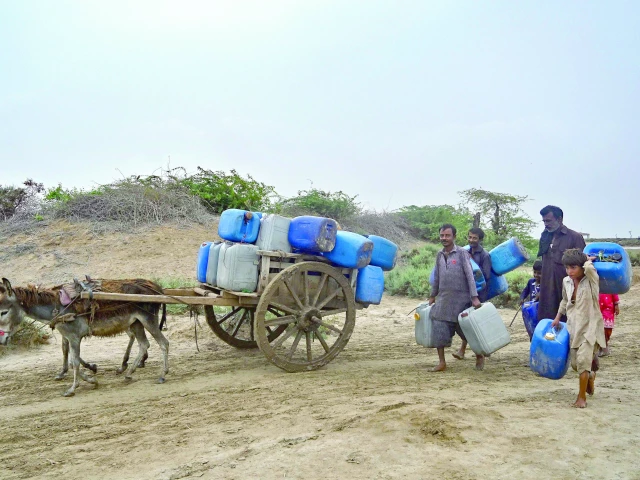KHARO CHAN:
Salt crust cracks under his feet, while Habibullah Khatti goes to his mother’s grave to say a final goodbye before giving up his parched island village on Pakistan’s Indus -Delta.
Seawater entry into the Delta, where the Indus River meets the Arabian Sea in the southern country, has triggered the collapse of agriculture and fishing society.
“That salt water has surrounded us from all four sides,” Khatti told AFP from Abdullah Mirbahar village in the town of Khari Chan, about 15 kilometers (9 miles), from which the river is emptied into the sea.
As the fish stock fell, the 54-year-old turned to tailor until it was also impossible with only four of the 150 remaining households.
“In the evening, an eerie silence takes over the area,” he said as straying dogs wandered through the deserted wood and bamboo houses.
Kharo Chan once consisted of about 40 villages, but most have disappeared under rising seawater.
The city’s population fell from 26,000 in 1981 to 11,000 in 2023, according to census data.
Khatti is preparing to move his family to nearby Karachi, Pakistan’s largest city and a swelling of economic migrants, including from the Indus Delta.
Pakistan Fisherfolk Forum, who advocates fishing communities, estimates that tens of thousands of humans have been displaced from Delta’s coastal districts.
However, more than 1.2 million people have been displaced from the overall Indus Delta region in the past two decades, according to a study published in March by the Jinnah Institute, a think tank led by a former minister of climate change.
The downstream flow of water in the delta has fallen by 80 percent since the 1950s as a result of irrigation channels, hydropower dams and the effects of climate change on ice and snow melting, according to a 2018 survey by the US-Pakistan Center for Advanced Studies in Water.
It has led to devastating penetration into seawater.
The salinity of the water has increased by approx. 70 percent since 1990, making it impossible to grow crops and affect shrimp and crab populations seriously.
“The delta sinks and shrinks,” said Muhammad Ali Anjum, a local WWF conservationist.
From the Tibet, the Indus River flows through disputed Kashmir before crossing the entire Pakistan length.
The river and its side elves migrate about 80 percent of the country’s agricultural land and supports millions of livelihoods.
The delta, formed by rich sediment deposited by the river when it meets the sea, was once ideal for agriculture, fishing, mangroves and wildlife.
However, more than 16 percent of the fertile country has become unproductive due to seawater intervention, found a State Water Agency Survey in 2019.
In the town of Keti Bandar, which spreads inland from the water’s edge, a white layer of salt crystals covers the soil.
Both carry drinkable water from Miles away, and the villagers are waging it home via donkeys.
“Who leaves their homeland willingly?” said Haji Karam Jat, whose house was swallowed by the rising water level.
He rebuilt further inland and expected more families to join him.
“A person only leaves their motherland when they have no other choice,” he told AFP.
The British colonial rulers were the first to change the course of the river with channels and dams, followed recently by dozens of hydropower projects.



